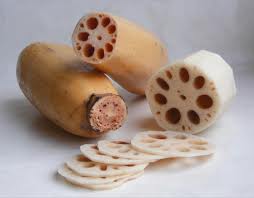In Tibetan Buddhism, lotuses feature prominently. For example, one of the oldest and most important early masters (8th c.) is Padmasambhava/Pema Jungnye, which means “Born from a Lotus,” as he is said to have been reborn in the heart of a lotus after having been burned to death on a funeral pyre. Buddhas, Bodhisattavas, and great masters are often depicted sitting on lotus seats and young consorts are described as being like a perfect, eight-petaled lotus. Lotuses regularly appear in Tibetan paintings (thangka) and sculpture and decoratively on furniture. You can even buy plug-in lotus lights for your home shrine. Because lotuses grown from the mud in water into beautiful flowers, lotuses also represent the mind of enlightenment coming forth from the confusion of ignorance.
Despite feeling pretty familiar with lotuses in this context, until this last month, I had never really fully appreciated them. Thankfully, our neighborhood park, Purple Bamboo Park, is currently holding a lotus festival. I can’t seem to stay away and have already taken four boat rides through a large section of the lake that is almost completely filled with blooming lotuses (a water field!). The slow moving boats hold around 15 passengers and a single rower navigates through the narrow passage of water left open. The boat meanders past blooming pink and white blooms pushing up from large green leaves. Sometimes you can even see a family of ducks or coupling dragonflies in the cavernous area shaded by leaves and blossoms.
One day as I was entering the park, I noticed a man selling what looked like a type of green fruit (I thought it might be similar to a sweetsop). The next day I decided to buy one, but found that they were being sold in tied-together bundles of three. Still having no clue what they were, I asked Sophia’s Chinese teacher, Qing Qing, and found out that they were lotus stalks with fresh lotus seeds. The seeds require effort to eat, as she showed me how first you have to remove each seed from the pod, peel off two different layers, and remove the bitter green interior before you eat it. While the texture reminds me of a nut, similar to a raw almond, it actually doesn’t have a lot of flavor.
Like many foods in China, the lotus seed has warming or cooling properties, but it depends on which part of the seed you eat. Qing Qing told me that the bitter green stem inside the seed is the only cooling component of the lotus and it can be dried and made into a tea. When the raw lotus seed is eaten alone, it has warming properties that can help with nervousness and sleep problems. The dried seed (the green interior is removed from the top before it’s dried) can be made into a sweet drink by combining the seeds, crushed dried white wood ear mushrooms, and rock sugar with hot water and leaving overnight. Drinking it helps nourish yin and reinforces body fluid.
After I learned where the seeds came from, I went back to the park and suddenly became aware of the seed pod and began noticing that as the petals of the flower opened more broadly, it became visible in the center. As the leaves fall off, the seed pod is left standing amidst the other blooms.
Now I seem to be seeing the seed pods everywhere. For example, last Friday I took Sophia and Isabel to Beijing’s 798 Art District, a former electronics factory complex built by the East Germans that has been re-purposed into a large area filled with galleries and cafes, and we went to a couple of galleries. The first one we stumbled upon featured copper work. If I hadn’t recently encountered the lotus seed pods, I probably wouldn’t have paid much attention to a whole room of copper lotus stalks and seed pods in various states of growth and decay.
The one part of the lotus I’ve been familiar with for awhile, but have never cooked with yet myself, is the root. To me, crunchy, sliced lotus root with its white meat and beautiful pattern of holes, is the best food to cook in a hotpot. I love how it soaks up the flavor of the broth and tastes better and stays crunchier than a potato. I’ve also had it in stir fries and in a soup with pork ribs, where it’s a great addition.

Lotus Root photo borrowed from: http://www.joyharari.com/tag/lotus-root-remedy/
Thanks to our proximity to Purple Bamboo Park, I’ve come to appreciate the depth of the China’s relationship with the plant. Not only is there a great appreciation of the beauty of the flowers (as there is for Tibetans), but little of the plant is actually “wasted,” as medicinal (and food) uses have been found for the lotus’s roots and seeds in both fresh and dried forms (the petals, leaves, and stems are also used in other Asian contexts). To me this epitomizes the rich depth of Chinese cuisine and medicine and its millennia-old relationship with plants (and animals) to uncover a myriad of uses and tastes.
-Pam













































